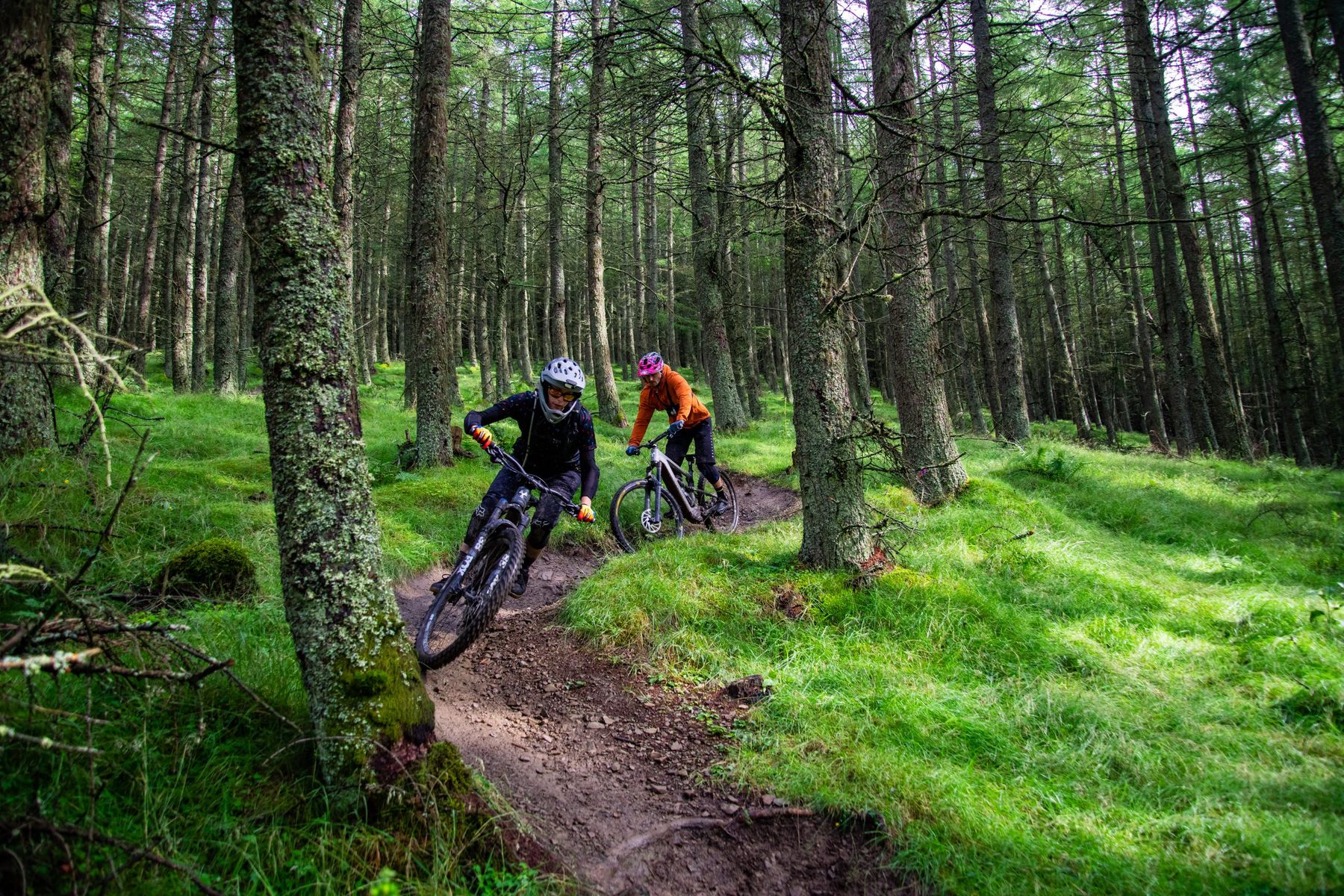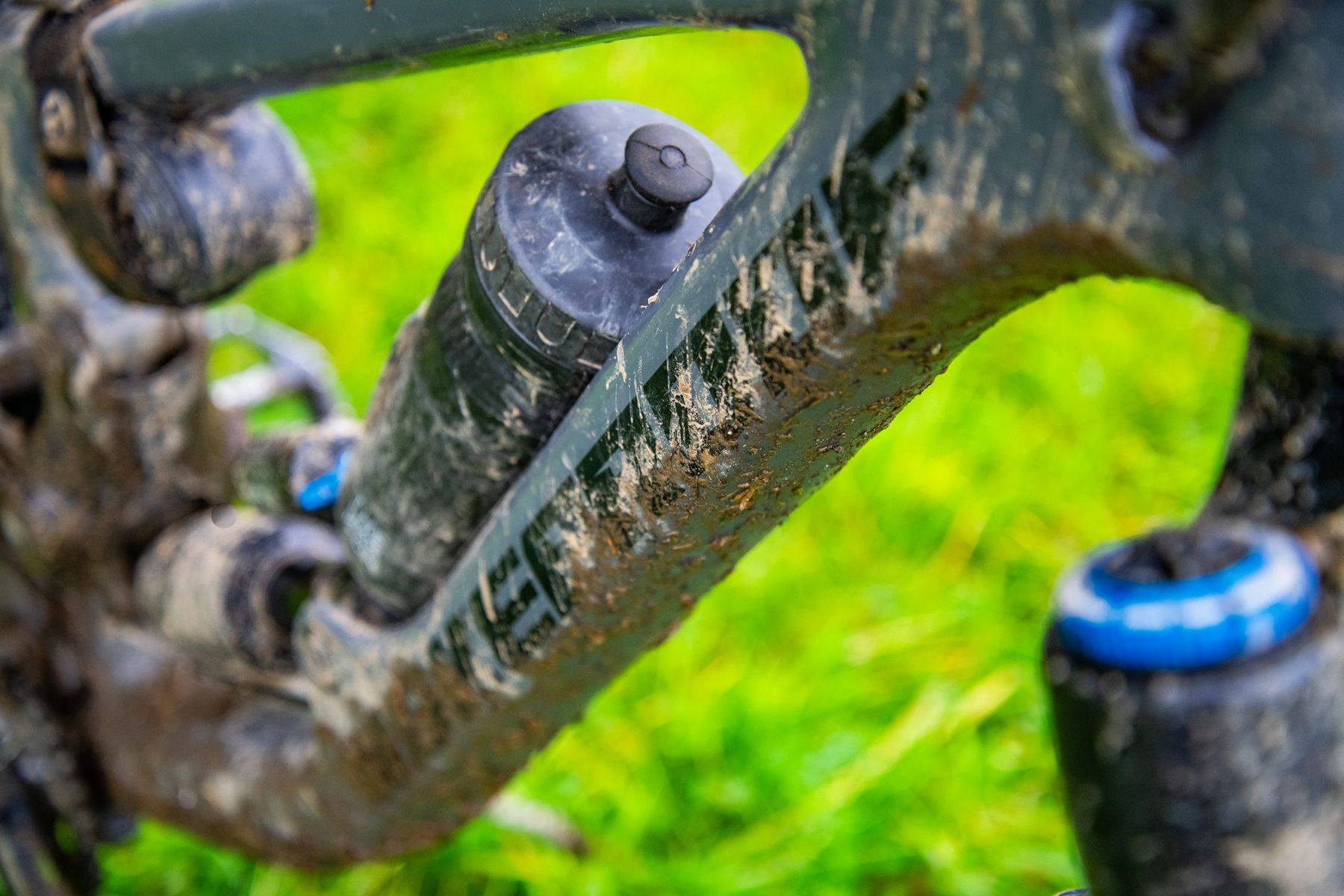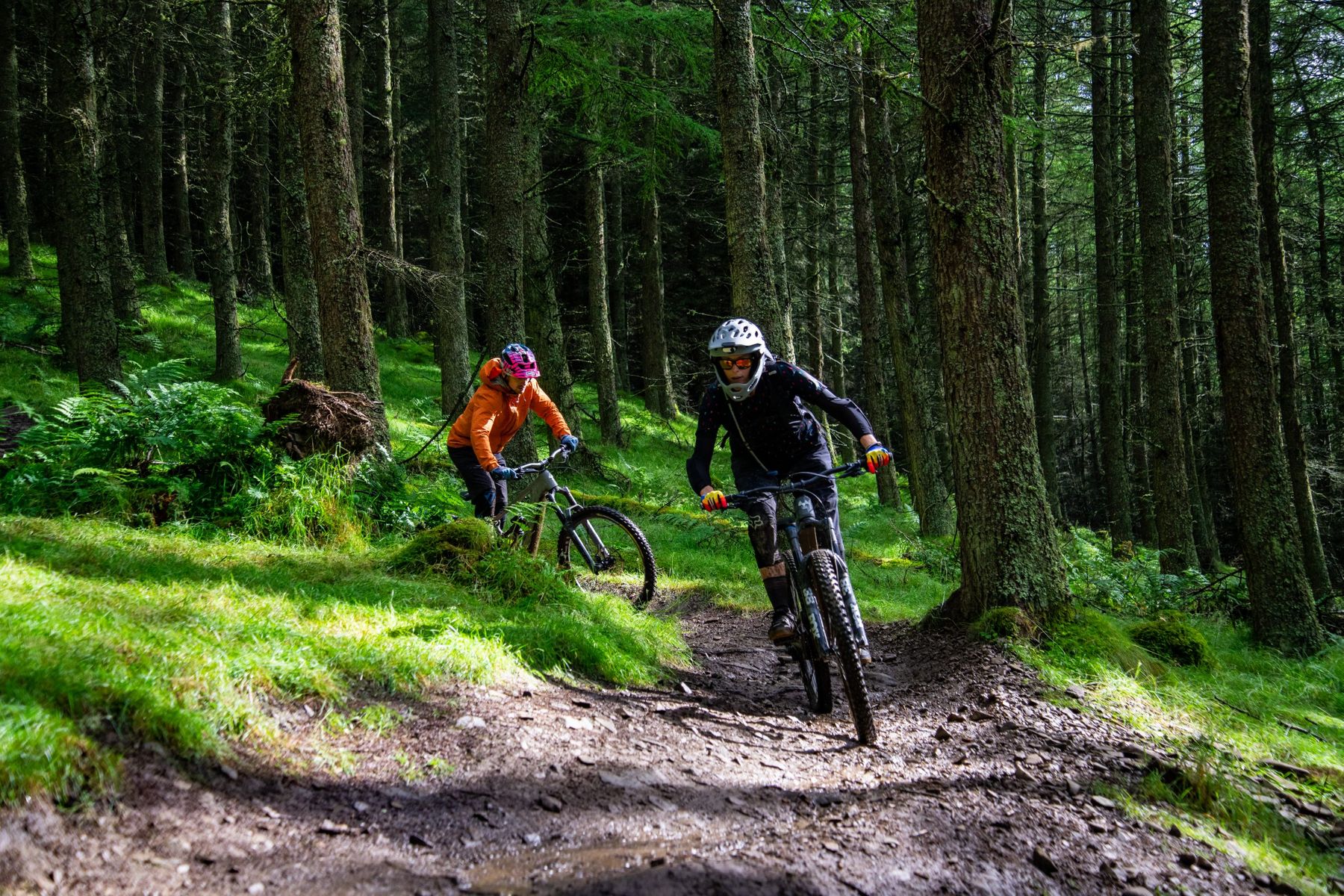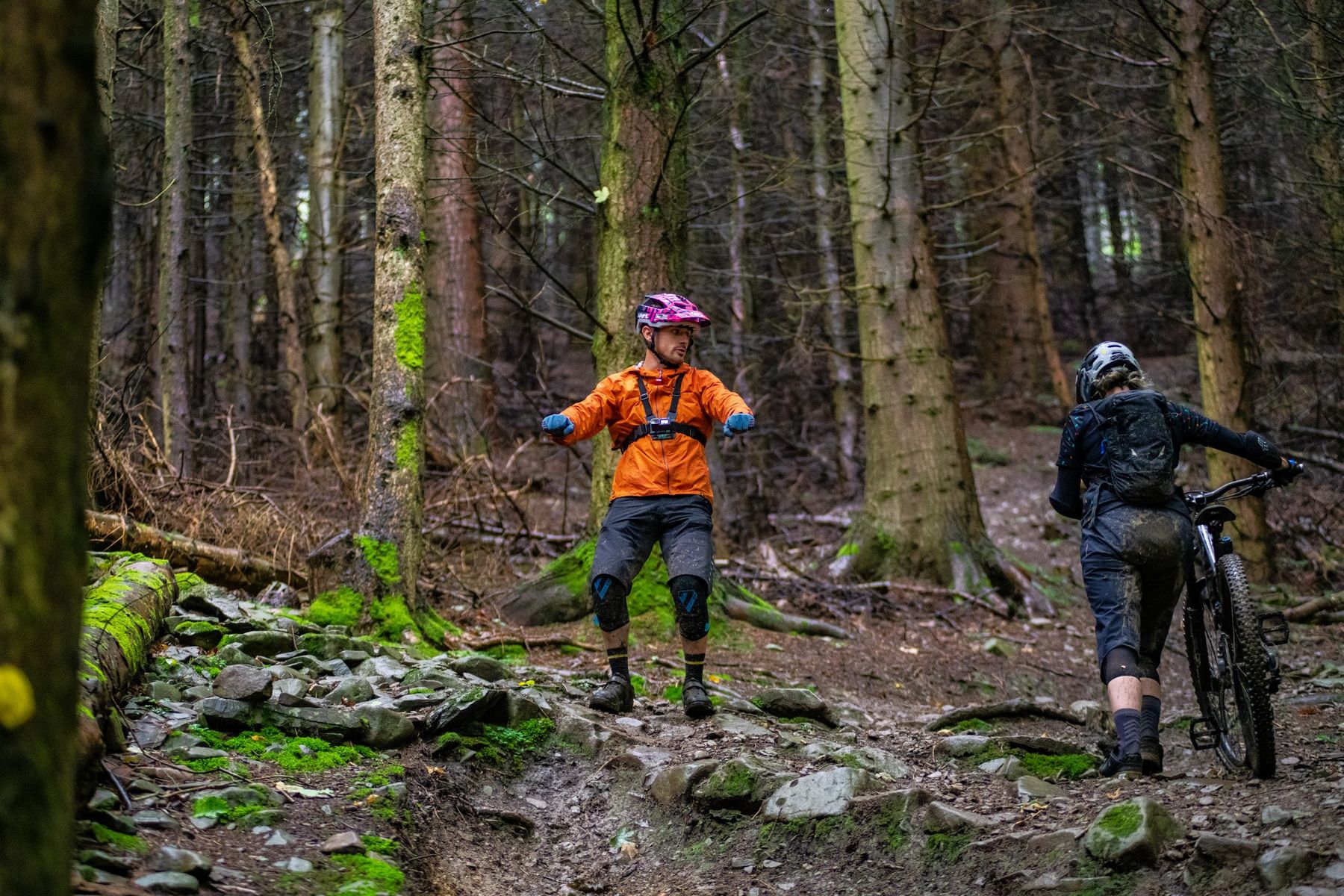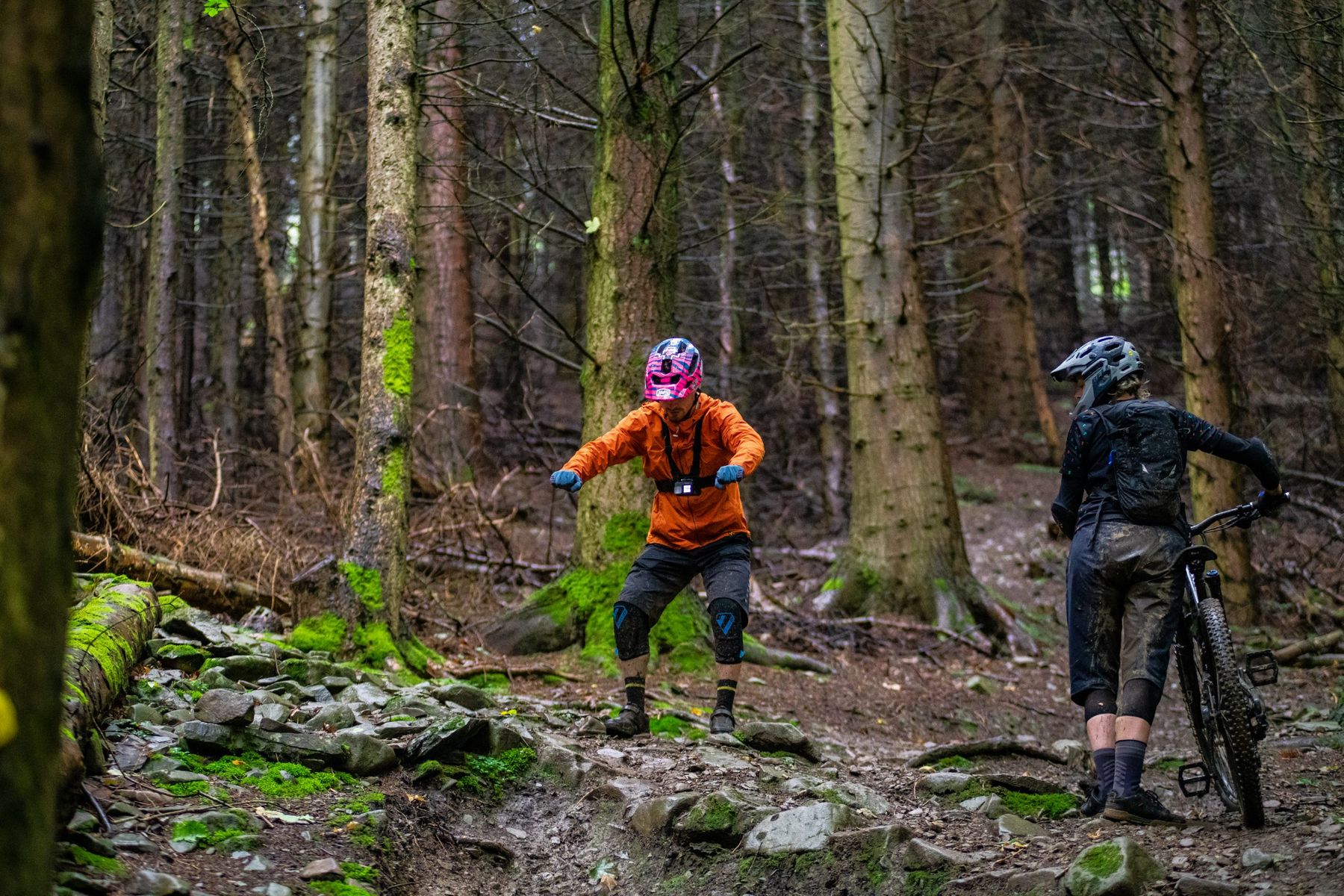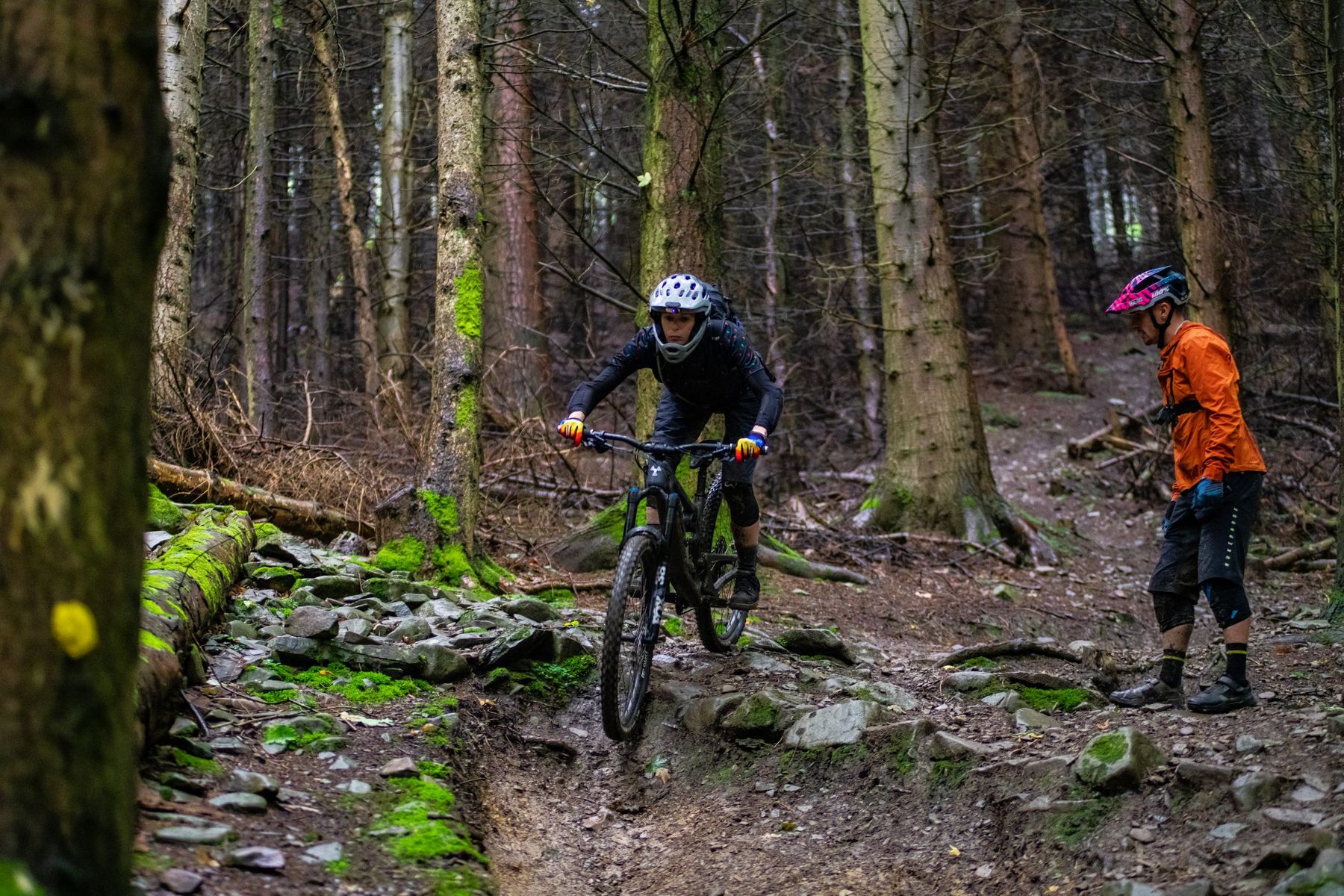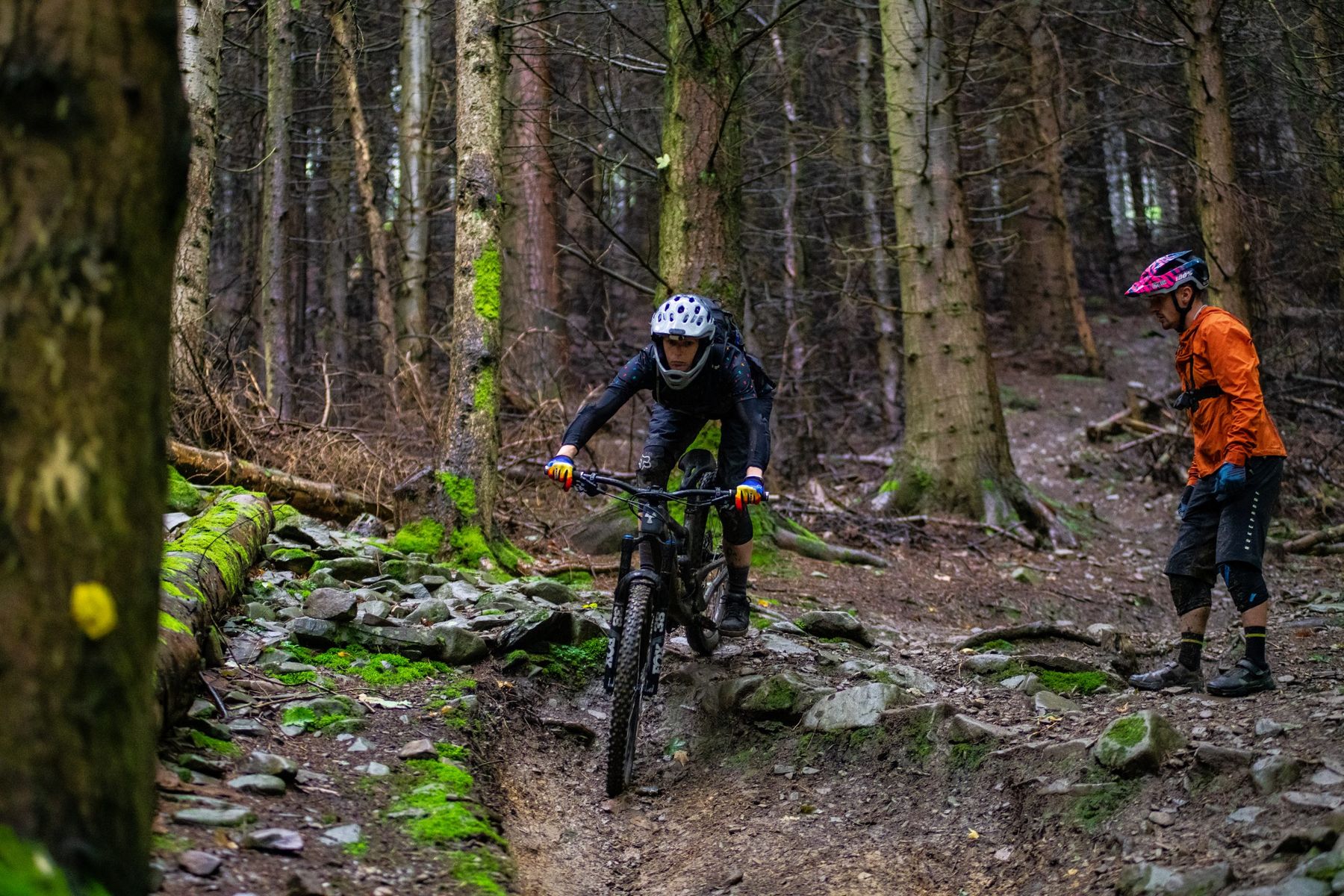The sense that I’m old enough to be Elliott Heap’s mum is not helped by the fact that I find myself ordering him a hot chocolate to go with my grown up’s coffee. We’re supposed to be getting going with a coaching session, but the weather has turned pretty biblical so we’re sheltering from a thunderstorm and figuring out what we’ll work on today.
Diary availability – both mine and his – has resulted in us meeting in Innerleithen, well away from his usual north of England coaching territory. I came here once a couple of years previously in glorious dry and dusty conditions in a spell where my riding confidence was running high. Since then, a series of injuries plus the limited riding of lockdown has left me wondering how on earth I ever managed that solo trip here. Did I really throw myself down this hillside, riding blind and alone, and enjoy it? It seemed a far off reality as I ventured out in the morning to see how much I’d forgotten since my last visit.
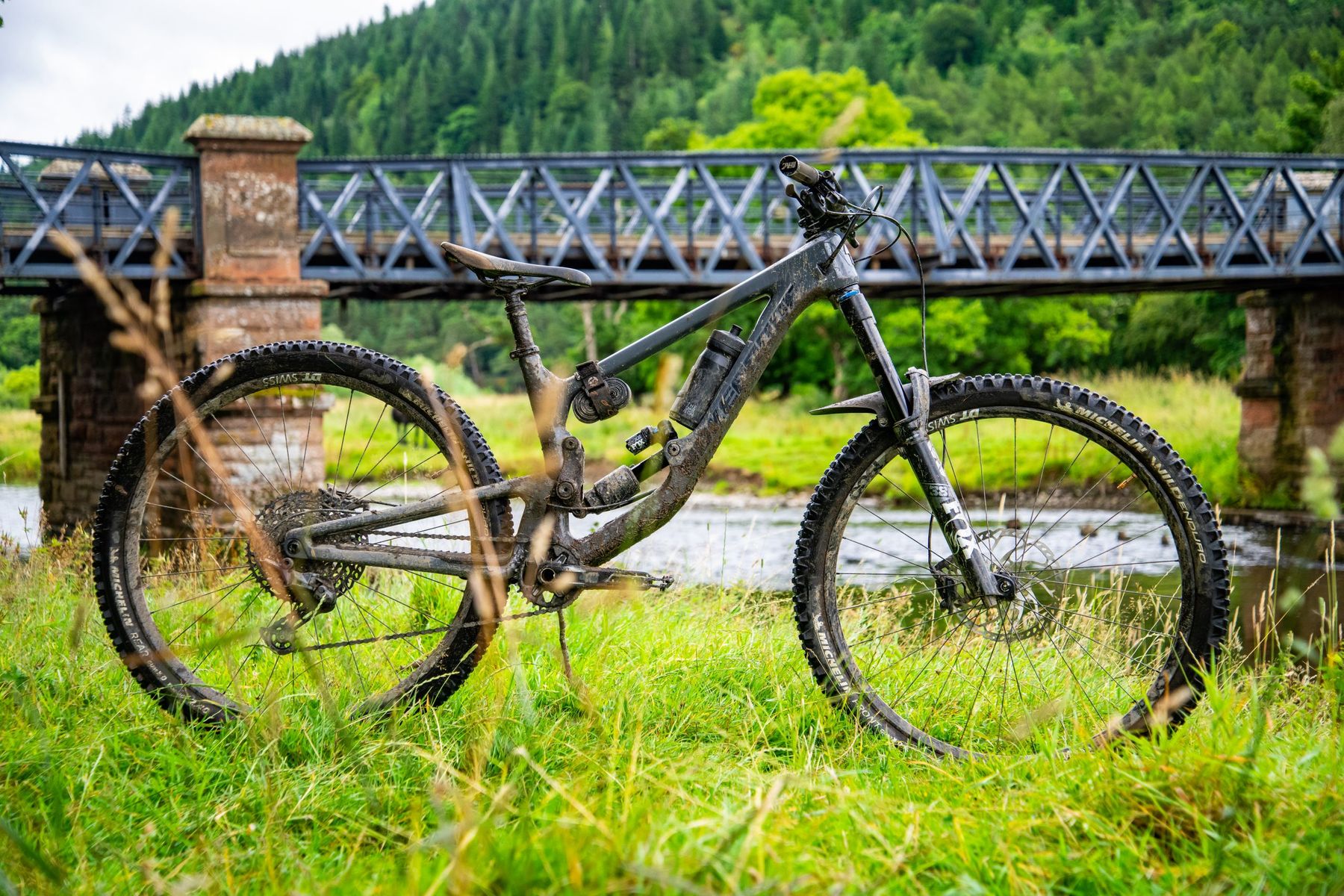
I’d been riding a Nukeproof Scout hardtail since early in the year, enjoying it enough to beg to keep hold of it a little longer than strictly needed for testing purposes. But despite the fact I often forget I’m riding a hardtail when I’m on it, I thought perhaps my body might thank me for tackling the terrain of Innerleithen on something a little bigger and bouncier. So it was that I was riding the Nukeproof Giga, set up in 29er format with 170mm travel at the rear and 180mm up front.
Where is the Old Ewe?
A morning reconnaissance mission of the steep and twisty Angry Sheep trail proved that I could still get down stuff, but it wasn’t pretty and it wasn’t fast. As I pedalled up the push up track, I watched other riders following steep ruts down the hillside and I wondered how I’d ever get myself down such a track. Had I ever ridden that kind of thing before? Possibly, but not for some time, and never in the wet.
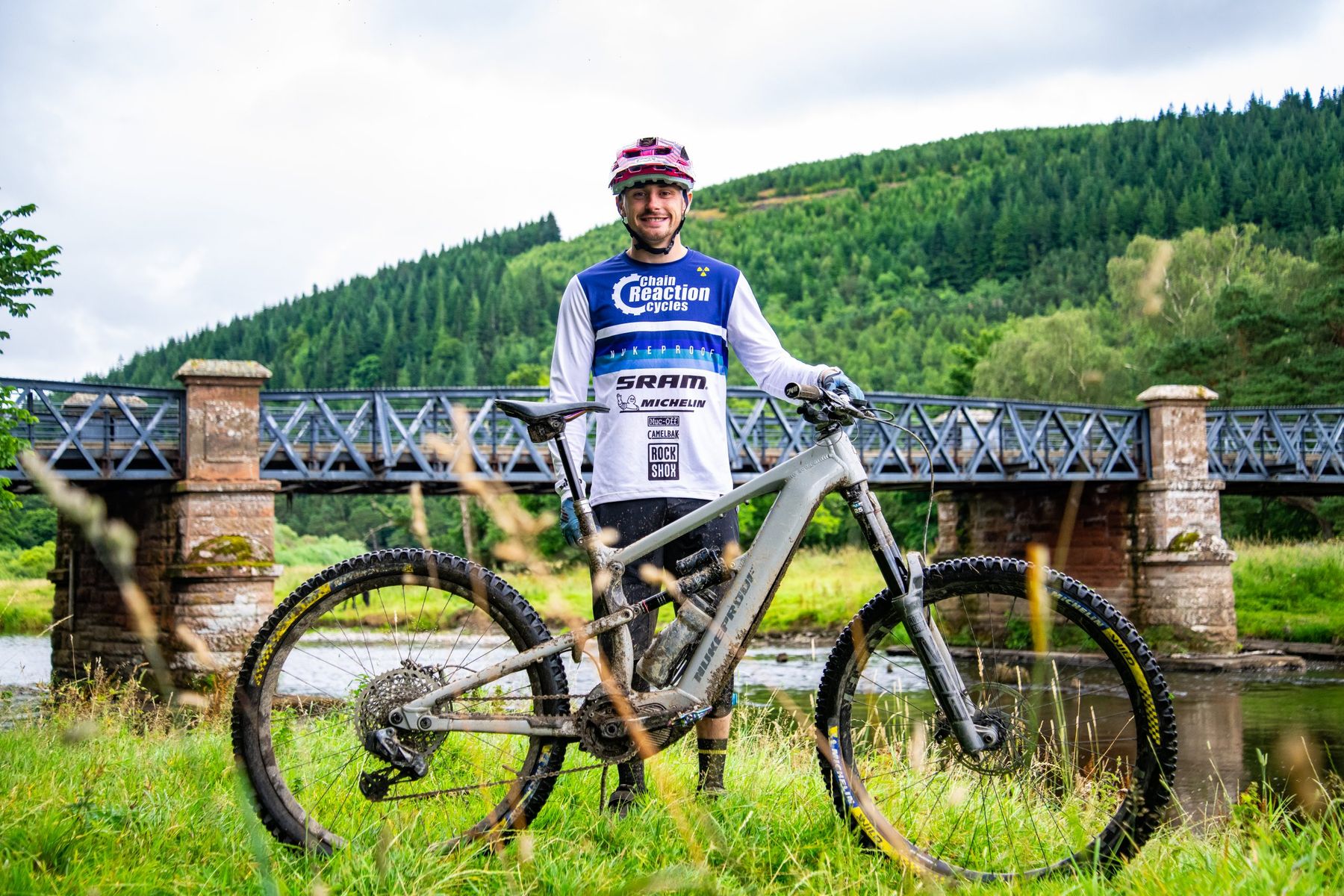
Hot chocolate and coffee finished, and rain converted to rivers and waterfalls, we pedalled our way back up towards Angry Sheep so 23 year old Elliott could hopefully knock some skills back into 42 year old me. ‘Fresh’ off the back of a solid week of riding plus a vomit inducing gym session (yeah, age aside, I’ll leave off any hopes of being a pro rider if that’s the effort and commitment level needed to win), Elliott was spinning his way up on his MegaWatt ebike. The offer of a tow was there, but I figured my old diesel engine was in need of a good warm up. As we hit an especially steep section, Elliott put his hand on my pack and pushed me upwards – a move I perform on my own children on almost every ride home (if you’re planning on having kids, I don’t recommend buying a house half way up a steep hill). Tables turned and me in the role of child, I lost all ability to balance or steer and simply wobbled off the trail, giggling – and panting harder than I had been before the assist. I decided to distract Elliott from thoughts of getting me to the top of the hill quicker by finding out how he’d got into teaching mountain bike skills.
Heaps of Experience
Unlike many riders who focus on their pro race career, then start to look to coaching as their race results wane and their body tells them they might need a new focus, Elliott started passing on his skills before he’d even got a contract. He wanted to race, but that cost money – so he funded it by starting a coaching company with friend Conor Martin. At just 16, Elliott was not yet eligible to take sessions on his own, so started out as an assistant coach and co-owner. By the time he was old enough to coach on his own, he had a couple of years of experience as a racer and teacher to inform his skills sessions. Perhaps it’s this process of coaching while still learning that makes him a good teacher, or maybe he just has that natural gift, but my session with him would show that Elliott certainly knows how to teach.
It’s one thing to be really good at a thing, and it’s another to be a teacher. To able to watch someone, analyse what they’re doing, break it down into a sequence of things that needs to change, and then start explaining to that person how to focus their energy so that the new learning point overrides the habitual path that their brain wants to take them down. To watch them again, see them caught up by trying to tell the body to do this instead of that, and to figure out a different way to explain it, so that the pupil gets what it is they’ve got to do, and why, and is able to put it all together and implement the change.
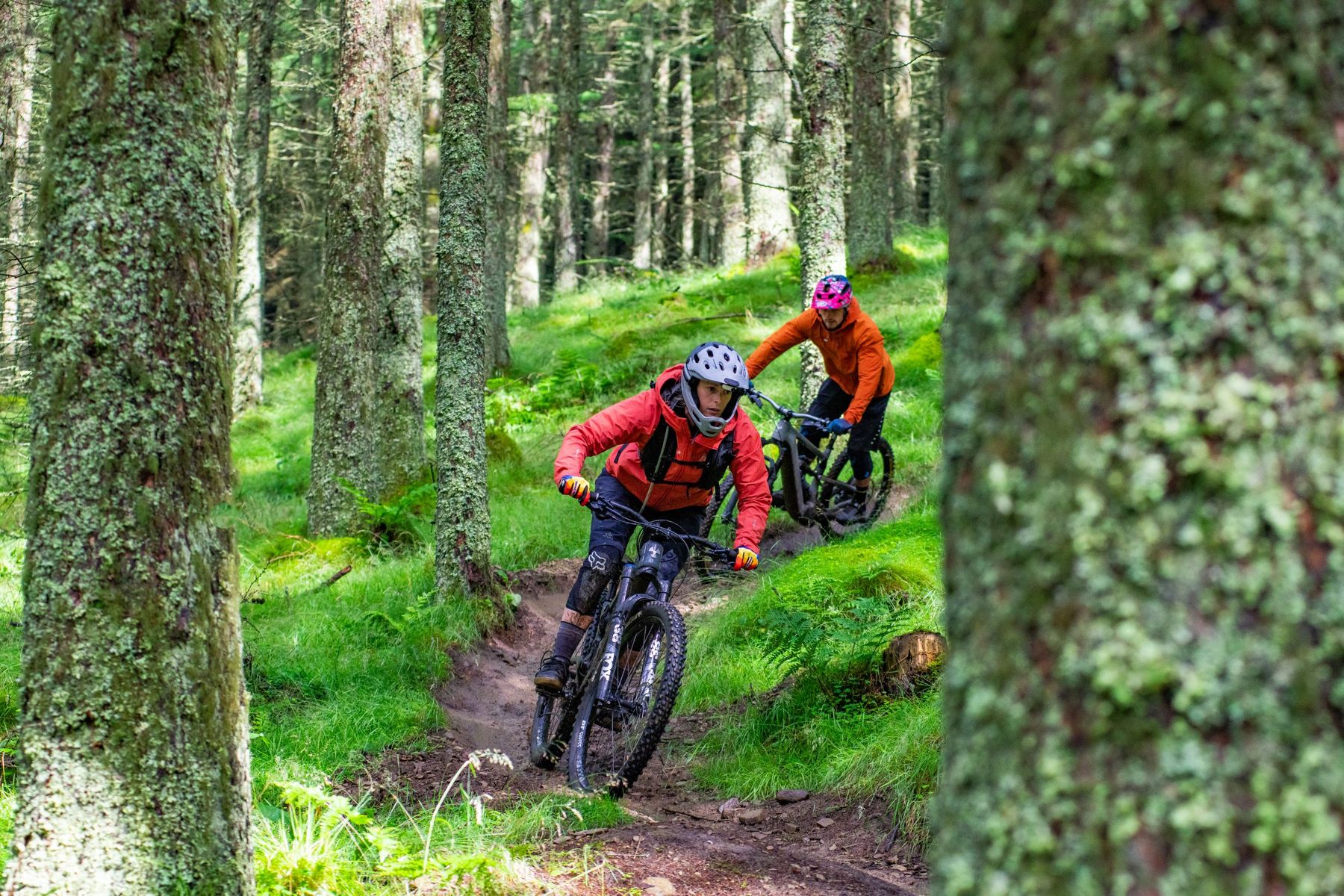
This is the process Elliott embarks on with me. We head down Angry Sheep, him following me and observing what I do, me doing my best not to look like a giraffe on a bike. I feel like I might be going a little faster than the morning’s practice run, but I’m still on the brakes and making the sweeping turns looking like some kind of traffic calming measure. A reminder to look ahead comes from behind and I realise I’ve gradually shifted from looking ahead to looking at the ground immediately in front of my wheels. I raise my eyes and instantly feel the trail smooth out and speed up beneath me.
Dropping off the end of the trail onto the fire road, I get the question that always fills me with dread in any teaching situation: ‘So how do you think you did?’. I try to think back beyond the ‘oh crap’ moments and the ‘phew, that was close’ ones to figure out why they felt like that. Obviously I didn’t look ahead enough, but it did feel a bit faster than last time, but then there was nothing graceful about those turns. Elliott’s diagnosis: you need to look ahead, get your heels down, and lean the bike. I get a moment to pause and recover on the way up the hill as I realise I have lost my sunglasses. Elliott whizzes back down the hill on his ebike to see if I dropped them when I took my helmet off at the end of the trail, but returns without them. I wonder if I even remembered to put them on?
We make our way back up to the top of the trail to do some drills. We arrive to find Harry Main and friends wondering whether to steal my sunglasses. I reclaim the glasses I managed to forget to put on and consider this proof that I wasn’t going very fast if I didn’t manage to fling any muck up into my eyes. Elliott chats with Harry about why they’re both up here and not in their usual localities. There’s a bit of chatter about possible ebike training sessions, then Harry and friends head downwards and Elliott show me a drill that should help sort out my turns.
Do It Again!
Weaving across the fire road, bike leaning side to side, this is not new news to me. I’ve seen it done, been shown it, even tried it, plenty of times before. But it’s never really clicked, and the first few tries I have result in the usual sensation of being a spider on roller skates. I feel like my body is going in all different directions at once, and all of them are wrong. It’s like the worst kind of aerobics class, where every step and arm movement leads me into yet another more coordinated participant. If I think about my left hand, my right foot does the wrong thing. If I think about my legs, my shoulders go the wrong way. I laugh about my lack of coordination, and Elliott sends me back up for another go.
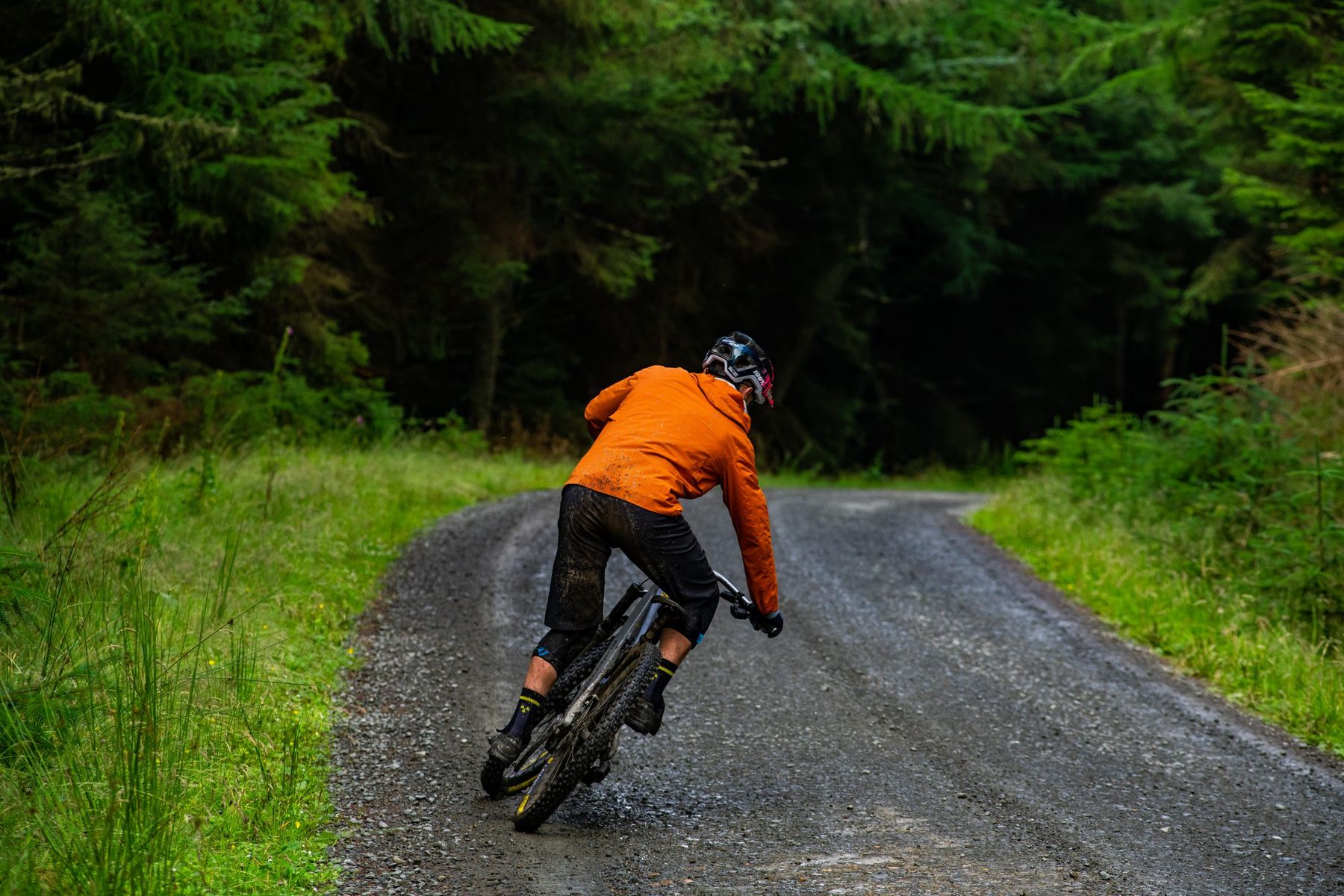
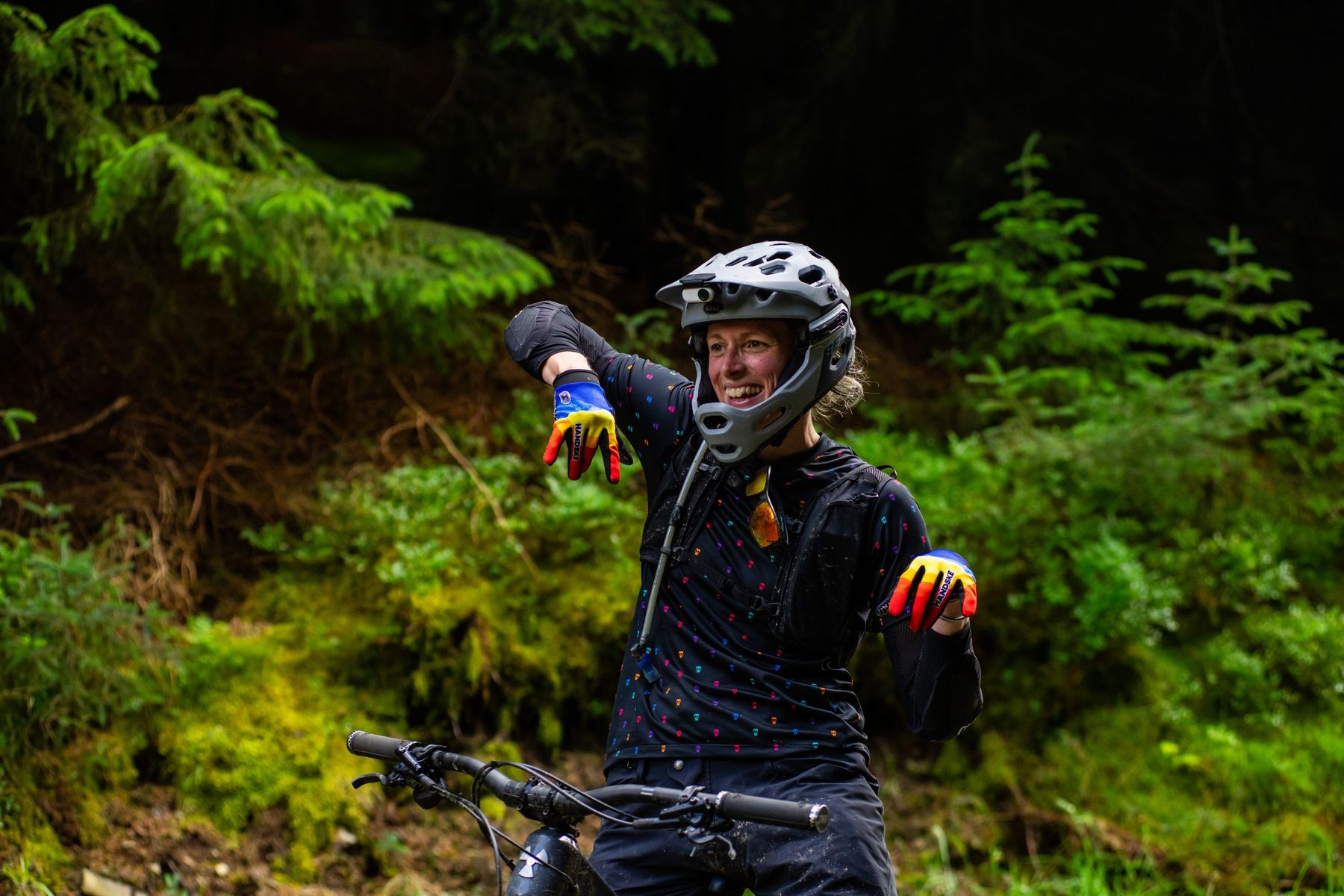
Tip the bike where you want to go. Opposite foot down. Touch the saddle to the inside leg. Tip the bike some more – you need to get far enough to get past the dead patch between the tread. And suddenly I’m triangulated. I lean, I feel the saddle on my leg, I feel the bike turn and – importantly – grip. I can feel the difference between the half-arsed watery lean I’ve been doing before, and the lean that gets the side knobs on the tyres working. It’s actually fun. I’m slaloming on a fire road, and it’s fun.
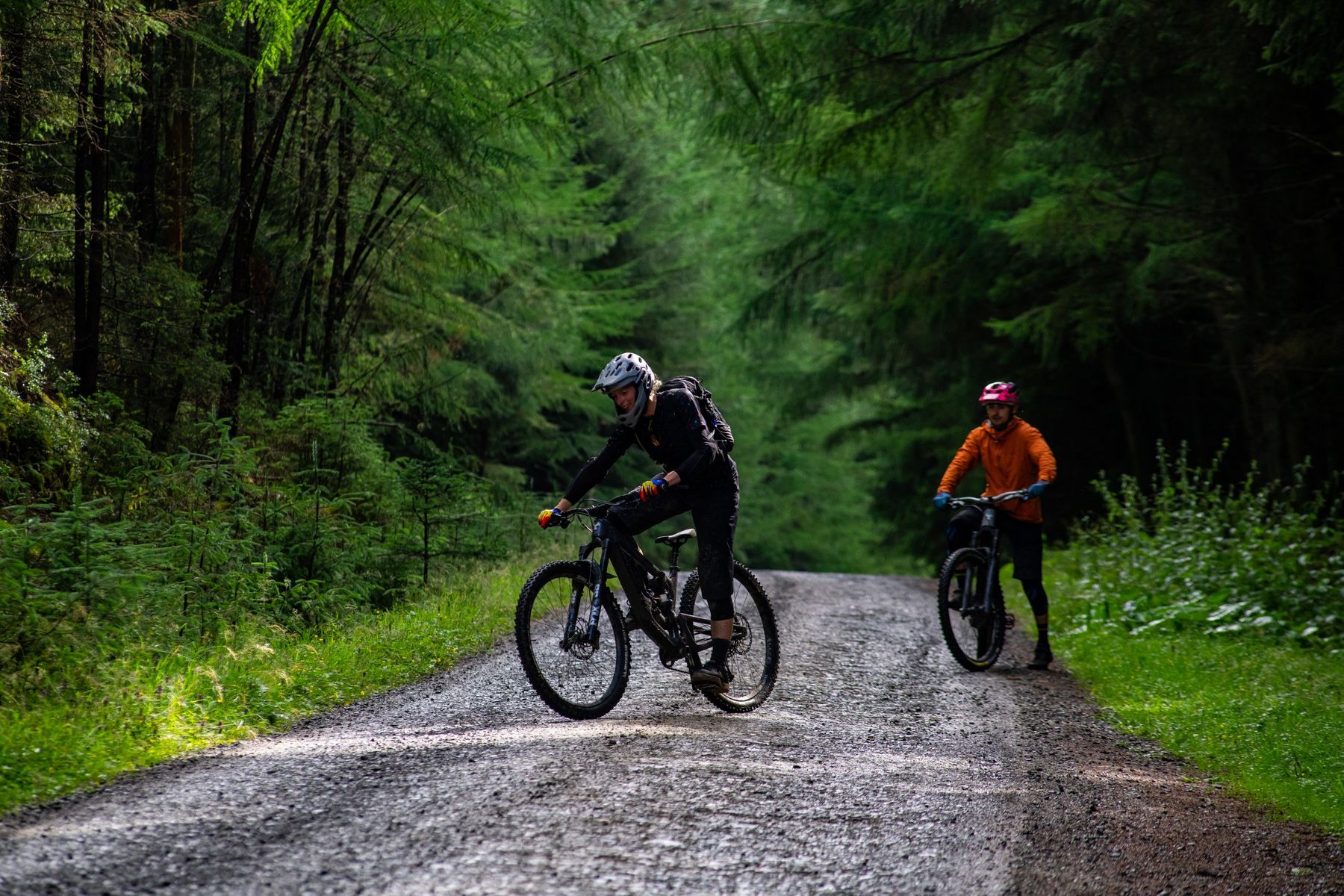
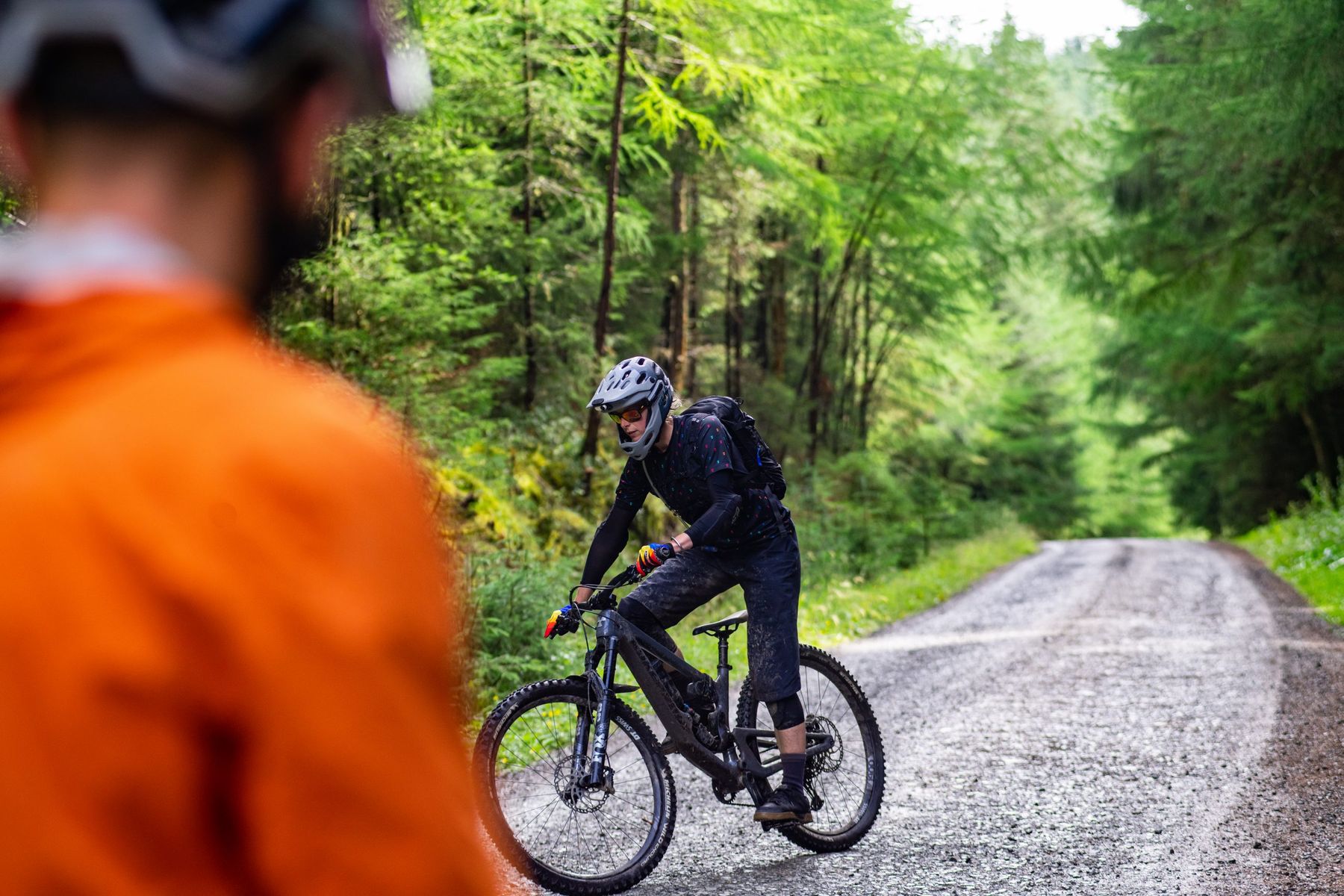
I try to figure out what’s different about this time and all the other times I’ve been told to lean the bike to turn. I realise it’s a combination of having the right teaching points to give me the how, and also the why. The ‘get past the dead zone’ advice explains why it’s always felt worse rather than better before – I’m wafting around in the dead zone rather than really leaving over. And the ‘touch the saddle’ bit is a specific physical sensation that’s easier to track than ‘have your foot down’ or ‘lean’. Invariably I think my body is foot down, or leaning the bike, but actually they’re not. It’s like getting back for a wheelie – you think you’re waaaay back and must be about to tip over the balance point, but it’s still a good foot and a bit behind you. ‘Touch the saddle with your inside knee’ is binary – I either am, or I’m not. If I am, then there’s a very good chance that’s because the bike is leaning over, and my foot is down, and my weight is all nicely balanced where it should be. This is the essence of being a good teacher – finding the thing that the pupil already understands and using that as a reference point to build on.
Linking it all together
We head back down Angry Sheep, putting the drill into practice. The difference is night and day. We session some of the turns, trying to string them all together, leaning one way and then the other. I seem to be better at lefts than rights. Or is it rights than lefts? If I think about it too much I end up all in a tangle – there’s plenty of practice still to be done to make this second nature. But there is definite improvement, and after riding the lines I missed on the previous runs, giggling my way round some corners and even letting out a small whoop, we decide the Angry Sheep training is done. We head off to find other trails, so that I can prove to myself I’ve learnt to ride round corners, rather than just to ride the corners of Angry Sheep.

I’m keen to try and find a drop or even a jump to work on, but as we’re all on unfamiliar territory we’re not sure exactly where such features might be found. We decide to head down through the woods, riding whatever we find, and seeing what I get stuck on. I lead the way, with Elliot following on behind, now mostly shouting words of praise and encouragement rather than reminders and instructions. He sounds genuinely pleased and impressed with the improvements I’ve made, which only adds to my pleasure as we ride trails downwards and blind. With every turn I do the tip/saddle touch/look where I’m going to go routine, and find myself wriggling my way through the trees. As I wriggle, I giggle and for the first time in a long while as I’m really enjoying what I’m riding.
Oh No I Can’t, Oh Yes You Can
Proceedings are interrupted briefly when I pick a line around a drop off that heads into a turn, declaring that I’ll not be able to ride off that. Of course, moments later I am riding off that, and then into the turn, and then a few moments more I’m doing it again, but better. I need to stay forward for longer, and I need to let the bike move under me rather than me throwing the bike forward – or myself back. A little further along the trail there’s another similar feature, but a touch bigger again. In a rare moment of ‘watch me’, Elliott rolls it to show that the line is there, and soon after I follow him. It’s notable that you spend very little time watching Elliott, he only gives the briefest of demonstrations. There’s no ‘behold the awesome skills of your teacher, and pray that you may one day be as great’ – he’s no show off. He teaches by demonstration only where needed – the rest is my careful analysis and explanation. Little touch points of progression rather than an assault of information overload.
What I wanted out of the day was to regain some confidence and to feel like I had some skills that would let me approach a trail with a more informed ‘X, Y and Z will see me through this’ rather than a ‘if I hold on and brake enough, maybe I’ll make it?’ stance. I certainly felt like I’d learnt some skills, and that was making me feel more confident. In the spirit of quitting while you’re ahead and not riding tired, but also harnessing my newly emboldened feelings, we decided to make our way back to the car park via the steep trails that bordered a downhill track being marked out for the next day. The trails here forked off in all directions, no single trail but instead a web of options, most of them at an angle that made stopping for a look out of the question. Putting my trust in the bike, the grip and my new skills, and encouraged by Elliott’s commentary of ‘nice!’, ‘yes!’ and ‘well done!’, I popped out at the trailhead a different rider to the one that had fearfully eyed up those same slopes only that morning.

Job done for the day, it’s time for Elliott to head home to where he lives with his mum and girlfriend, who are, according to social media updates received through the day, having a bit of a knees up. More like a tired dad than a young son, Elliott hopes they’ve both worn themselves out and fallen asleep by the time he gets home. It’s been a long week and he’s ready for a chilled weekend rather than a night of drunken high-jinks. For me, it’s time to set up camp in soggy Innerleithen, ready to put my new confidence to the test at the Golfie the next day.
It’s refreshing to me to see someone start teaching at the start of their career, rather than at the end of it. Elliott’s enthusiasm for seeing you progress seems totally genuine, and he certainly has the knack for analysing and explaining what you need to do. You might like to hope that his race career doesn’t take off too much and leave him without time to coach, as you’d be missing out on a learning opportunity – though with all the training and effort he’s putting in to his own riding, that doesn’t seem likely. Get in there while you can – and with any luck he’ll still be going when your toddler is ready for some mountain bike coaching.
For more information, check out:
This feature was produced with the support of Nukeproof
